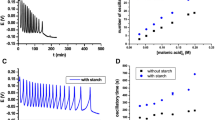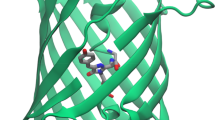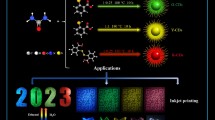Abstract
Segmented conjugated polymers, wherein the conjugation is randomly truncated by varying lengths of non-conjugated segments, form an interesting class of polymers as they not only represent systems of varying stiffness, but also ones where the backbone can be construed as being made up of chromophores of varying excitation energies. The latter feature, especially when the chromophores are fluorescent, like in MEHPPV, makes these systems particularly interesting from the photophysics point of view. Segmented MEHPPV-x samples, wherex represents the mole fraction of conjugated segments, were prepared by a novel approach that utilizes a suitable precursor wherein selective elimination of one of the two eliminatable groups is affected; the uneliminated units serve as conjugation truncations. Control of the compositionx of the precursor therefore permits one to prepare segmented MEHPPV-x samples with varying levels of conjugation (elimination). Using fluorescence spectroscopy, we have seen that even in single isolated polymer chains, energy migration from the shorter (higher energy) chromophores to longer (lower energy) ones occurs — the extent of which depends on the level of conjugation. Further, by varying the solvent composition, it is seen that the extent of energy transfer and the formation of poorly emissive inter-chromophore excitons are greatly enhanced with increasing amounts of non-solvent. A typical S-shaped curve represents the variation of emission yields as a function of composition suggestive of a cooperative collapse of the polymer coil, reminiscent of conformational transitions seen in biological macromolecules.
Similar content being viewed by others
References
J H Burroughes, D D C Bradley, A R Brown, H N Marks, K Mackay, R H Friend, P L Burn and A B Holmes,Nature (London) 347, 539 (1990)
R H Friend, R W Gymer, A B Holmes, J H Burroughes, R N Marks, C Taliani, D D C Bradley, D A dos Santos, J L Bredas, M Logdlund and W R Salaneck,Nature (London) 397, 121 (1999)
J J M Halls, C A Walsh, N C Greenham, A B Holmes, E A Marsegila, R H Friend and S C Moratti,Nature (London) 376, 498 (1995)
N Tessler, G J Denton and R H Friend,Nature (London) 382, 695 (1995)
N S Sariciftci, L Smilowitz and A J Heeger,Science 258, 1474 (1992)
A R Brown, N C Greenham, J H Burroughes, D D C Bradley, R H Friend, P L Burn, A Kraft and A B Holmes,Chem. Phys. Lett. 200, 46 (1992)
C Zhang, D Braun and A J Heeger,J. Appl. Phys. 73, 5177 (1993)
P L Burn, A B Holmes, A Kraft, D D C Bradley, A R Brown, R H Friend and R W Gymer,Nature (London) 356, 47 (1992)
P L Burn, A B Holmes, A Kraft, D D C Bradley, A R Brown and R H Friend,J. Chem. Soc, Chem. Commun. 32 (1992)
D Braun, E G J Staring, R C J E Demandt, G L J Rikken, Y A R R Kessener and A H J Venhuizen,Synth. Met. 66, 75 (1994)
R Gowri, D Mandal, B Shivkumar and S Ramakrishnan,Macromolecules 31, 1819 (1998)
G Padmanaban and S Ramakrishnan,J. Am. Chem. Soc. 122, 2244 (2000)
G Padmanaban and S Ramakrishnan,Synth. Met. 119, 533 (2001)
U Stalmach, Dissertation Thesis (University of Mainz, 1996)
H Meier, U Stalmach and H Kolshorn,Acta Polym. 48, 379 (1997)
M Yan, L J Rothberg, E W Kwock and T M Miller,Phys. Rev. Lett. 75, 1992 (1995)
T-Q Nguyen, I Martini, J Liu and B J Schwartz,J. Phys. Chem. B104, 237 (2000)
C J Collison, L J Rothberg, V Treemaneekarn and Y Li,Macromolecules 34, 2346 (2001)
G Padmanaban and S Ramakrishnan, (under preparation)
Author information
Authors and Affiliations
Rights and permissions
About this article
Cite this article
Padmanaban, G., Ramakrishnan, S. Segmented conjugated polymers. Pramana - J Phys 61, 425–434 (2003). https://doi.org/10.1007/BF02708322
Issue Date:
DOI: https://doi.org/10.1007/BF02708322
Keywords
- Polyphenylene vinylene
- segmented conjugated polymer
- control of conjugation length
- fluorescence
- energy transfer
- conformational transition




